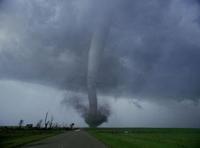-
Training volcano scientists from around the world to predict, respond to eruptions

Scientists and technicians who work at volcano observatories in eleven countries visited the U.S. Geological Survey’s Hawaiian Volcano Observatory earlier this month to learn techniques for monitoring active volcanoes. The International Training Program in Volcano Hazards Monitoring is designed to assist scientists from other nations in attaining self-sufficiency in monitoring volcanoes and reducing the risks from eruptions.
-
-
Socioeconomic status may influence understanding of science

When it comes to science, socioeconomic status may widen confidence gaps among the least and most educated groups in society, according to a new study. The findings show that similar levels of attention to science in newspapers and on blogs can lead to vastly different levels of factual and perceived knowledge between the two groups. Notably, frequent science blog readership among low socioeconomic-status groups actually lowered their scores on factual tests of scientific knowledge while high levels of attention to science in newspapers caused them to feel they were less knowledgeable compared to those who read less or those from higher socioeconomic backgrounds.
-
-
DARPA seeks to speed new materials development process
Military platforms — such as ships, aircraft, and ground vehicles — rely on advanced materials to make them lighter, stronger, and more resistant to stress, heat, and other harsh environmental conditions. Currently, the process for developing new materials to field in platforms frequently takes more than a decade. DARPA seeks to address this problem by developing a methodology and toolset to compress the applied material development process by at least 75 percent: from an average of ten years or longer to just two and a half years.
-
-
As budget shrinks, DOD needs to rethink strategy to preserve U.S. technological edge
The United States currently accounts for less than one-third of global research and development spending, and this fraction is projected to decline to 18 percent by 2050. Those statistics, together with the recognition that the United States no longer maintains superiority across all research fields, mean that DOD’s technological leadership now depends upon its ability to identify and leverage relevant research advances as they emerge from the global science and technology enterprise, says a new report from the National Research Council.
-
-
Bad social policy, not ideology, is to blame for the Arab world’s downward spiral

Nothing symbolizes the sorry state of Arab politics more than the rise of ISIS. The Arab world at large appears to be fast descending into a political quagmire, only a few years after the euphoria of the so-called Arab Spring. The unravelling of old dictatorships in Libya, Tunisia, Egypt and Syria has opened up a Pandora’s box of sectarian, ethnic and tribal divisions, old fault lines that have persisted under the heavy hand of police states for the last century.
-
-
Silicon Valley braces for floods, storm surges caused by sea level rise
A new analysis found that $36.5 billion in property and at least 145,000 California residents could be directly affected in the next thirty years from flooding caused by sea level rise. San Mateo County, home to major corporations including Facebook, Oracle, and Genentechin Palo Alto, and the low-income population of East Palo Alto, would be the most affected.
-
-
Earthquake researchers get online primer for simulation method
Researchers now have access to expert instruction for an emerging simulation method to study seismic effects on structures and to design buildings that better withstand strong earthquakes. The National Science Foundation’s (NSF) George E. Brown Jr. Network for Earthquake Engineering Simulation (NEES) is providing a primer on its NEEShub. he primer explains how to use hybrid simulations, methods that are helping researchers study the effects of earthquakes on buildings and other structures.
-
-
Convergence of chemistry and biology raises concerns about designer toxins
The convergence of chemistry and biology is providing major benefits to humankind, particularly in health care, alternative energy sources, and in environmental control – and when combined with other advances, particularly in nanotechnology, it is also being exploited in developing improved defensive countermeasures against chemical and biological warfare agents. This convergence, however, has also raised concerns that biotechnology could be applied to the production of new toxic chemicals, bioregulators, and toxins. A new report from OPCW says that the potential for scaling up biological processes for large scale production of chemicals of concern is still limited, but biomediated processes might still be effective for producing weaponizable quantities of toxins which are lethal to humans in microgram or lower dosage.
-
-
Correcting pipeline problems to aid STEM diversity
Educators and policymakers have spent decades trying to recruit and retain more underrepresented minority students into the science, technology, engineering, and math (STEM) pipeline, to no avail: Traditionally underrepresented groups remain underrepresented. A new analysis of disappointing results in the pipeline’s output leads two Brown University biologists to suggest measures to help the flow overcome an apparent gravity.
-
-
Military implications of advances in brain research
Researchers funded by the Pentagon’s Defense Advanced Research Projects Agency(DARPA) have developed a new way to visualize the complete brain in three-dimensional imaging. The breakthrough could advance the field of rapid brain imaging, allowing scientists to see in greater detail how parts of the brain interact on a cellular level and better understand those interactions throughout the brain. A former DARPA program manager recently told a policy group that “It turns out the expert marksman has a brain state, a state that they enter before they take the perfect shot. Can I teach a novice to create this brain state? The answer was yes.”
-
-
“Smart” rocks detect bridge damage
It is hard to gauge how structurally sound a bridge is when its foundation is buried in a riverbed deep below the water’s surface. New “smart” rocks which are being developed by researchers will give engineers an accurate, easy and cost-effective tool to monitor a bridge’s foundation, in real time. The leading cause of bridge collapse in the United States is scour, an erosion process where water flow carries away river bed deposits and creates scour holes around the bridge pier or abutment. Smart rocks placed at the base of bridge foundations are designed to roll to the deepest point of a scour hole and act as field agents to relay scour depths.
-
-
The price tag of the 2° climate target
Addressing climate change will require substantial new investment in low-carbon energy and energy efficiency — but no more than what is currently spent on today’s fossil-dominated energy system. To limit climate change to 2° Celsius, low-carbon energy options will need additional investments of about $800 billion a year globally from now to mid-century, according to a new study, but much of that capital, however, could come from shifting subsidies and investments away from fossil fuels and associated technologies. Worldwide, fossil subsidies currently amount to around $500 billion per year.
-
-
Congress debates BioShield funding while medical schools debate bioterrorism training
Just as researchers urge medical schools across the United States to include bioterrorism preparedness courses in their curricula, Congress is debating whether to continue spending on Project Bioshield, an initiative launched in 2004 to incentivize otherwise unprofitable research on treatments for rare outbreaks or bioterror agents such as anthrax and botulinum toxin.
-
-
Tornado threat in Tornado Alley can be eliminated by building walls: scientists

In the United States, most devastating tornadoes occur in Tornado Alley, which is a strip of land between the Appalachian Mountains and the Rocky Mountains, including most American Midwest states. In 2013, there were 811 confirmed tornadoes in the United States, 57 in Europe, and 3 in China. Among 811 tornadoes in the United States, most, especially the most devastating ones, occurred in Tornado Alley. Scientists say that building three 300 meter high and 50 meter wide walls, at the cost of about $160 million each — the first close to the northern boundary of the Tornado Alley, maybe in North Dakota; the second one in the middle, maybe in the middle of Oklahoma and going to east; the third one in the south of Texas and Louisiana – would significantly reduce, if not eliminate altogether, the threat of devastating tornadoes in Tornado Alley.
-
-
Sandia Labs-developed IED detector being transferred to the U.S. Army
Though IED detonations have declined in Afghanistan since a peak of more than 2,000 in the month of June 2012, Department of Defense reports indicated IEDs accounted for about 60 percent of U.S. casualties that year. Detecting improvised explosive devices in Afghanistan requires constant, intensive monitoring using rugged equipment. When Sandia researchers first demonstrated a modified miniature synthetic aperture radar (MiniSAR) system to do just that, some experts did not believe it. Those early doubts, however, are gone. Sandia’s Copperhead — a highly modified MiniSAR system mounted on unmanned aerial vehicles (UAVs) — has been uncovering IEDs in Afghanistan and Iraq since 2009. Now, Sandia is transferring the technology to the U.S. Army to support combat military personnel.
-
More headlines
The long view
A Shining Star in a Contentious Legacy: Could Marty Makary Be the Saving Grace of a Divisive Presidency?
While much of the Trump administration has sparked controversy, the FDA’s consumer-first reforms may be remembered as its brightest legacy. From AI-driven drug reviews to bans on artificial dyes, the FDA’s agenda resonates with the public in ways few Trump-era policies have.
Risk Assessment with Machine Learning
Researchers utilize geological survey data and machine learning algorithms for accurately predicting liquefaction risk in earthquake-prone areas.
Foundation for U.S. Breakthroughs Feels Shakier to Researchers
With each dollar of its grants, the National Institutes of Health —the world’s largest funder of biomedical research —generates, on average, $2.56 worth of economic activity across all 50 states. NIH grants also support more than 400,000 U.S. jobs, and have been a central force in establishing the country’s dominance in medical research. Waves of funding cuts and grant terminations under the second Trump administration are a threat to the U.S. status as driver of scientific progress, and to the nation’s economy.
The True Cost of Abandoning Science
“We now face a choice: to remain at the vanguard of scientific inquiry through sound investment, or to cede our leadership and watch others answer the big questions that have confounded humanity for millennia —and reap the rewards.”
Bookshelf: Smartphones Shape War in Hyperconnected World
The smartphone is helping to shape the conduct and representation of contemporary war. A new book argues that as an operative device, the smartphone is now “being used as a central weapon of war.”
New Approach Detects Adversarial Attacks in Multimodal AI Systems
New vulnerabilities have emerged with the rapid advancement and adoption of multimodal foundational AI models, significantly expanding the potential for cybersecurity attacks. Topological signatures key to revealing attacks, identifying origins of threats.
